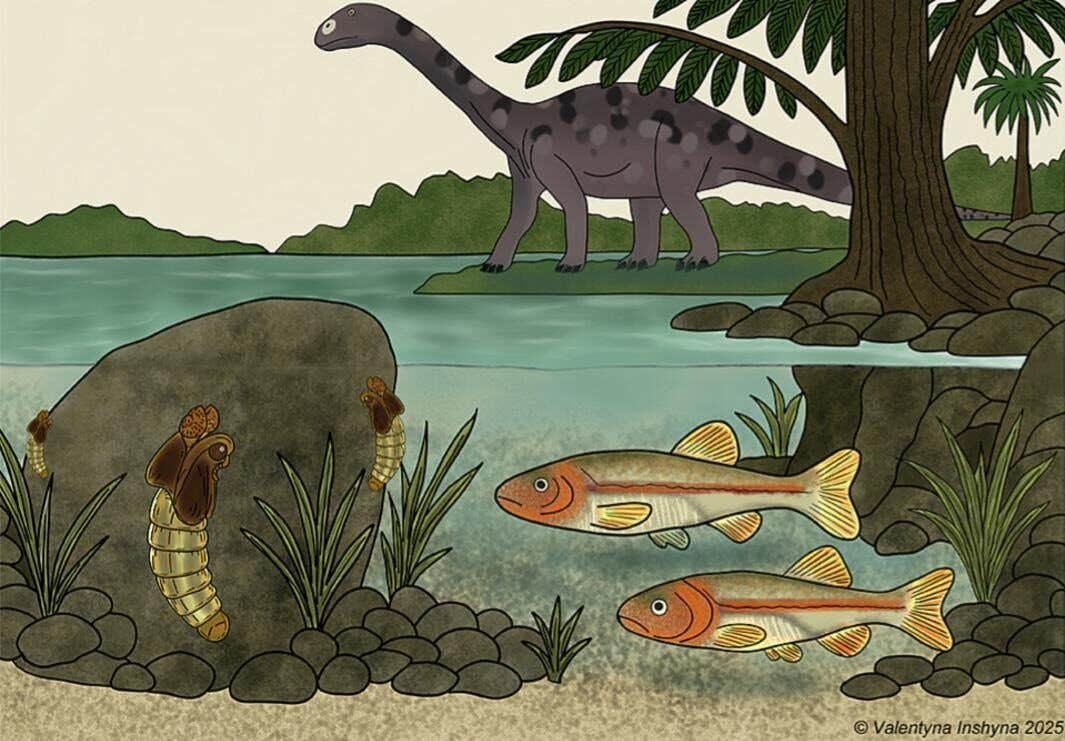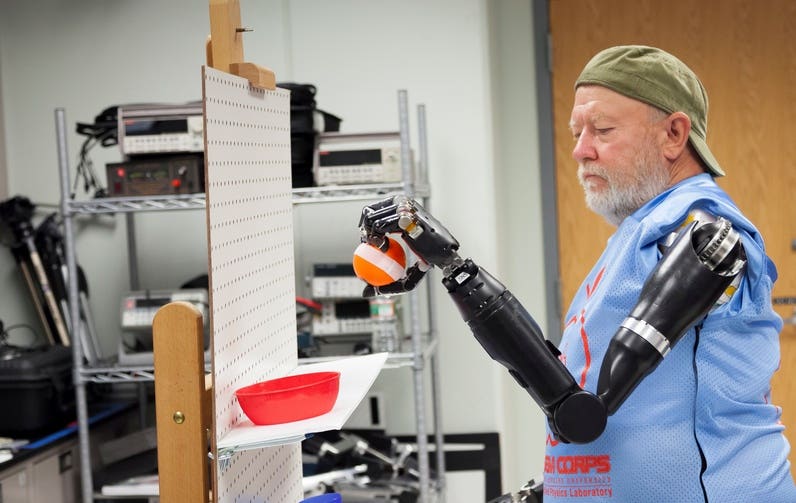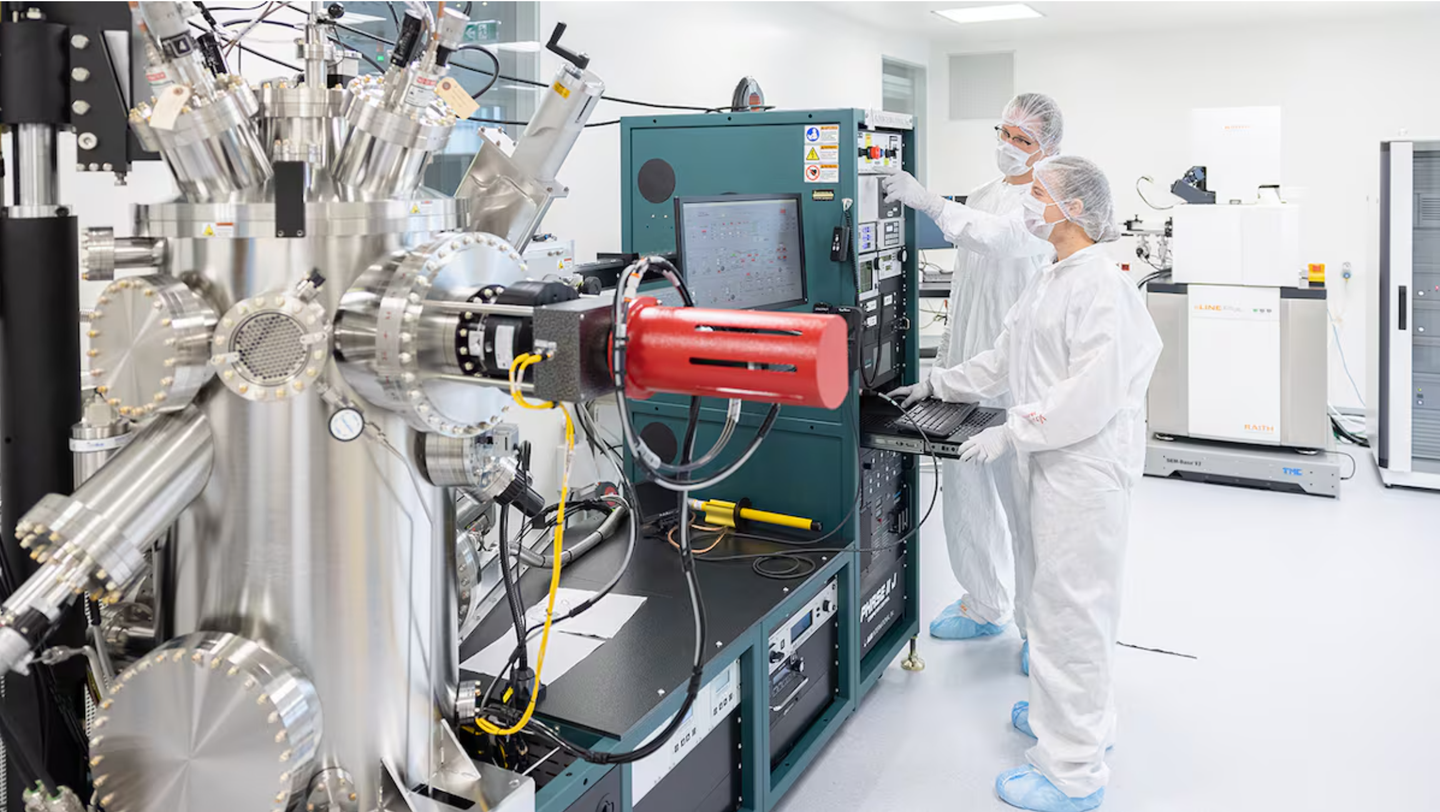150-million-year-old fly fossil redefines insect evolution history
Deep under the Jurassic rock beds of New South Wales, scientists discovered fossilized insects that push back the history of one of the world’s most hardy families of flies. These…

Fossils from Australia’s Talbragar beds reveal the oldest known midges in the Southern Hemisphere. (CREDIT: Gondwana Research)
Deep under the Jurassic rock beds of New South Wales, scientists discovered fossilized insects that push back the history of one of the world's most hardy families of flies. These fragile traces, buried deep under layers of fragile shale once formed by the bed of an old lake, are the oldest known Chironomidae family midges in the Southern Hemisphere.
The discovery suggests that these non-biting flies, still common near freshwater today, were thriving across Gondwana nearly 150 million years ago—much earlier than anyone thought.
The study was led by researchers at Spain's Doñana Biological Station (EBD-CSIC), and co-authors from the Australian Museum Research Institute, New South Wales University, Munich University, and Massey University, New Zealand. Together, the team pieced together an evolutionary jigsaw that upends the work of previous research on chironomids' dispersal and origin.
A Fly from Standing Waters
The new species, Telmatomyia talbragarica, was named after the sediments of the lake in which it was found—"fly from the stagnant waters." Six fossil specimens, both emerging adults and pupae, preserve minute details of the insects' wings, legs, and mouthparts. Those features allowed scientists to confidently identify them as chironomids, or non-biting midges, a group now that dominates freshwater environments as decomposers and fish food.
This fossil, the Southern Hemisphere's oldest officially documented, implies that this freshwater animal group might have originated on the southern supercontinent of Gondwana," said lead author Viktor Baranov.
Microscopic analysis by the researchers found a new adaptation: a terminal disc—a kind of suction pad—to hold the insect body to surfaces. This trait was thought to be exclusive to water-dwelling species, but the sediments at Talbragar suggest a fresh water lake environment, demonstrating how adaptable these ancient insects were.
A Glimpse into a Jurassic Ecosystem
Talbragar Fish Beds are known for their extremely well-preserved fossils, from ferns to fish. Around 145 million years ago, the site was a calm water lake lined with dense forest. Such environments were perfect breeding grounds for midges whose larvae pass their development time in quiet, oxygen-depleted water. Fossils obtained from there suggest that the chironomids already diversified into numerous ecological niches by the late Jurassic, suggesting they were far more widespread than formerly understood.
Before this discovery, the oldest confirmed fossils of chironomids have come largely from northern continents like Asia and Europe. The presence of fossil midges in Australia helps to bridge a long record gap and suggests evidence that the family may have had its origin in Gondwana initially before it dispersed towards the north.
Its probable subfamily, Podonominae, has long been the subject of insect biogeography studies—studies of the distribution of species across continents. Earlier theories attributed their origin in north Gondwana or northern supercontinent Laurasia to isolated fossil evidence. But with this Australian discovery, the argument is better made that the group did indeed originate in the south and went on to disperse globally.
Peering Through Time with Microscopes
Podonominae are found today chiefly in the Southern Hemisphere—across South America, Australia, South Africa, and New Zealand. Their fragmentary distribution is the classic vicariance textbook example, with populations becoming separated by geological entities such as oceans or mountains and evolving independently. Breaking apart of Gondwanaland would have separated the populations, causing them to diverge into new species, as Swedish entomologist Lars Brundin proposed in 1966.
"This discovery fills a significant gap in the fossil record," UNSW's Matthew McCurry of the Australian Museum said. "There is a bias for searching for and researching fossils in the Northern Hemisphere. As a result, we make incorrect assumptions about where groups evolved."
The team of researchers compared the fossils, which they studied with high-resolution microscopes, with living midges as well as ancient specimens. They examined wing veins, bristles, antennae, and leg segments to discover evolutionary links. They also examined the sediment levels to confirm the insects' Jurassic age, ruling out any possibility of their having been transported from the upper, younger levels.
The scientists found signs of morphological diversity even among the few well-preserved specimens, indicating that chironomids were diversifying into a number of lines of species even at this point. The excellent preservation of the fossils is very informative on how small, delicate freshwater insects looked and lived during the dinosaur era.
Filling Gaps in the Southern Fossil Record
Despite this revolutionary find, the Southern Hemisphere chironomid fossil record remains meager. Two other Podonominae fossils were never discovered south of the equator, with the exceptions of India's Paleocene and Australia's Eocene. The paucity is not due to dearth, but due to the difficulty of fossilizing small insects in the right circumstances. Their delicate bodies get decayed readily before they get buried, giving the paleontologists minimal clues on the evolution of ancient insects.
Massey University's Steve Trewick emphasized the significance of these fossils: "There have long been questions about how Southern Hemisphere animals and plants evolved over geological history. Fossil populations of small, delicate freshwater insects like the Talbragar fly are rare and help us to understand the history of life on Earth."
Future studies integrating fossil records with contemporary genomic information can potentially show if passive dispersal by wind or drifting detritus or active migration over early land bridges transported these ancient midges. Knowing that could shed light on how climate, continental movement, and freshwater habitats influenced global biodiversity.
Practical Implications of the Research
Through tracking the ancient history of midges, scientists can see how tiny freshwater organisms evolve to survive changing environments—something they can discover outside of paleontology. Chironomids today are critical water-quality monitors because their larvae respond quickly to contamination and oxygen levels.
Learning how their ancestors survived changes in the environment over millions of years will help researchers determine how aquatic ecosystems might respond to global warming today.
This study also opens up new exploration into less well-known fossil beds in the Southern Hemisphere so that the history of life is not constructed solely on northern finds.
Research findings are available online in the journal Gondwana Research.
Related Stories
- New species of ancient predator whale discovered in Australia
- Rare Antarctic fossil discovery has rocked scientific understanding of ancient marine reptiles
- Groundbreaking discovery rewrites over a century of insect and plant science
Like these kind of feel good stories? Get The Brighter Side of News' newsletter.
Mac Oliveau
Science & Technology Writer
Mac Oliveau is a Los Angeles–based science and technology journalist for The Brighter Side of News, an online publication focused on uplifting, transformative stories from around the globe. Passionate about spotlighting groundbreaking discoveries and innovations, Mac covers a broad spectrum of topics—from medical breakthroughs and artificial intelligence to green tech and archeology. With a talent for making complex science clear and compelling, they connect readers to the advancements shaping a brighter, more hopeful future.



